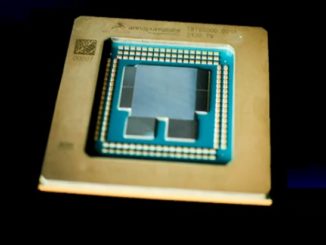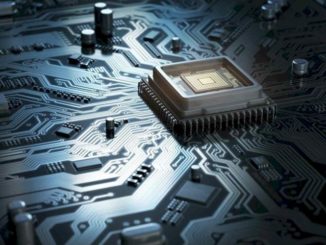
Chip design firm ARM is getting into the cloud business. The company whose designs power almost all of the world’s cell phones, has steadily pushed its designs into new ventures, including servers, as we have covered extensively. But on Tuesday it branched into something completely different.
It is selling cloud services to help a new breed of customers such as appliance makers connect devices to the internet of things in a secure fashion. The ARM mbed cloud is now available for customers that want to create a connected device that is easier to secure, track and get online.
The cloud service is a good option for those wanting to put their devices online, but it’s also an example of how an established company is trying to grow its business as the internet of things shifts the sale of physical goods into the sale of services.
ARM is a bit different in that it didn’t sell a physical good. It sells a license to its chip architecture to companies like Qualcomm, Samsung and even Apple. However, its IP sales are based on the sales of a physical good–semiconductors. Yes, more semiconductors are going to be sold as we put computing in more things, but ultimately hardware is a low-margin business. Far more lucrative are the services. Those services can even expand a market beyond a company’s own physical goods.
For example Thyssen Krupp has shifted its elevator business from merely selling elevators to delivering a sensor-based predictive maintenance service. This had the advantage of broadening Thyssen Krupp’s market beyond the elevators it manufactures. Using a sensor and data analytics hosted in Microsoft Azure, it can predict failures in competitors’ lifts. The new service has tripled Thyssen Krupp’s available market.
The question for ARM is whether or not going into the lower layers of an IoT cloud is enough of a high-margin service to move the needle at ARM. Michael Horne, VP of marketing and sales for ARM’s IoT business unit, anticipates that this will be a significant source of revenue for the company in the future, but he declined to give any projections. He also declined to discuss margins.
ARM’s cloud will be hosted initially by an undisclosed cloud provider, but Horne says it could eventually be offered on any public cloud or even on a company’s own servers. However, ARM customers have been more interested in a cloud-based offering, Horne says.
So why would a company building a connected device turn to ARM’s mbed cloud rather than Amazon, Azure or IBM’s Bluemix? ARM says that the security features that tie into its chips will be one reason, as well as customers wanting to consolidate vendors. It may be right, but I’m still not sure how much value will accrue to ARM in the long run.
The mbed cloud only provides a small subset of a true IoT platform. Above the device management and provisioning layers that ARM offers, an IoT cloud needs more. It should offer data analytics that handle stored historical data for model-building and the ability to apply those models to incoming real-time data. It doesn’t stop there. Such clouds also need to turn those analytics into something intelligible for business users as well as serve up an API so other software or machines can act on it.
Not every platform currently provides all of these layers. But they will, and as they do the value of each lower level becomes more commodified. It also becomes more difficult to differentiate against platforms. So with ARM entering at this low end using software it has built and now runs on a partner’s cloud, the question is both whether ARM can win over customers and whether the business provides margins that will be additive compared to the margins for its current licensing business.
The transformations wrought by cheap sensors and access to cheaper analytics demand that every company rethink its core business. ARM isn’t alone in seeking to capitalize on services, nor is it the only company placing bets in new lines of business.
Stacey Higginbotham has spent the last fifteen years covering technology and finance for a diverse range of publications, including Fortune, Gigaom, BusinessWeek, The Deal, and The Bond Buyer. She is currently the host of The Internet of Things Podcast every week and writes the Stacey Knows Things newsletter all about the internet of things. In addition to covering momentum in the Internet of Things space, Stacey also focuses on semiconductors, and artificial intelligence.





ARM can look for the means to compliment, but inevitably will be getting into custom projects and design initiatives that compete with its licensee base.
This has been a concern for some time on Qualcomm, Nvidia, NXP, Freescale, Broadcom, APM, Cavium, Apple taking the architectural high command. All are ARM Holdings competitors in their product strongholds. Success breds success.
A15, A57, A53, A72 all popped Holdings plc stock price nicely on a short sustainable and predictable 14 month cadence ramming right into stacks, packaging, parity power with Intel and lithography at saturation.
No doubt new ARM high end license sales are on the verge to take a dip.
Post Dunkirk that was 2012 into 2013, into 2017 ARM barricades itself into its Keep of IOT and services.
Mike Bruzzone, Camp Marketing